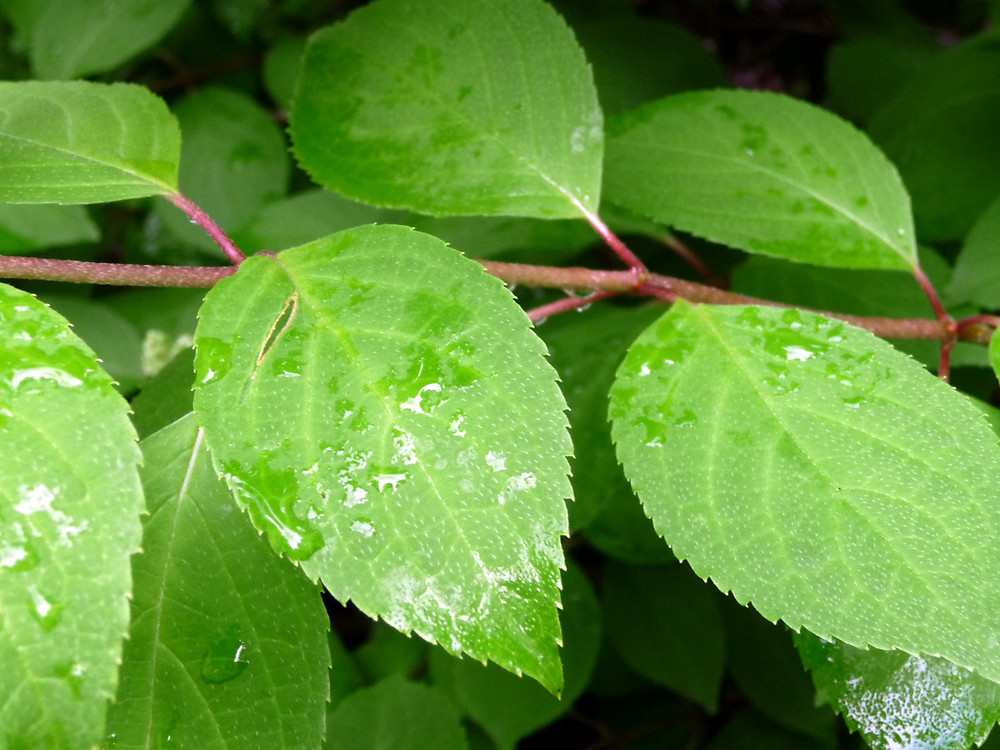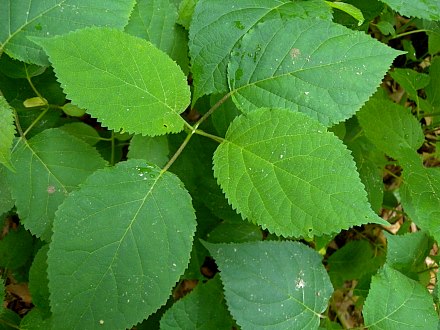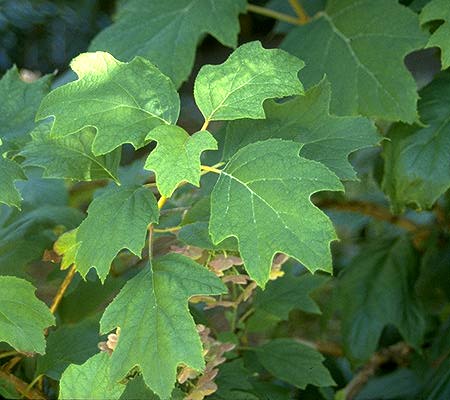Hydrangea Leaves: The Key To Growing Beautiful Blooms
Hydrangea Leaves: The Key to Growing Beautiful Blooms
Hydrangeas are beautiful flowering shrubs that can add a touch of elegance to any garden. But did you know that the health of your hydrangea's leaves is actually the key to growing beautiful blooms?
In this blog post, we'll take a closer look at the role that hydrangea leaves play in flower production. We'll also discuss some tips for keeping your hydrangea leaves healthy and thriving.
How Hydrangea Leaves Affect Flower Color
The color of hydrangea flowers is determined by the acidity of the soil in which they grow. In acidic soil, hydrangeas will produce blue flowers. In alkaline soil, they will produce pink flowers.
The reason for this is that hydrangeas absorb aluminum from the soil. In acidic soil, the aluminum is more soluble, so it is more easily absorbed by the plant. This results in the production of blue flowers.
In alkaline soil, the aluminum is less soluble, so it is not absorbed by the plant as easily. This results in the production of pink flowers.
How Hydrangea Leaves Affect Flower Size
The size of hydrangea flowers is also affected by the health of the plant's leaves. Healthy leaves produce more flowers, and the flowers themselves will be larger and more vibrant.
If your hydrangea's leaves are looking yellow or wilted, it's a sign that the plant is not getting the nutrients it needs. This can lead to smaller flowers and a decreased overall bloom production.
How to Keep Hydrangea Leaves Healthy
There are a few things you can do to keep your hydrangea leaves healthy and thriving.
- Water regularly. Hydrangeas need about an inch of water per week. Be sure to water deeply, so that the water reaches the roots.
- Fertilize regularly. Hydrangeas need a balanced fertilizer, such as a 10-10-10 fertilizer. Apply fertilizer once a month during the growing season.
- Prune properly. Pruning hydrangeas can help to encourage new growth and larger flowers. Prune in the early spring, before the plant starts to grow new leaves.
- Protect from pests and diseases. Hydrangeas are susceptible to a few pests and diseases, such as aphids, scale, and leaf spot. If you see any signs of pests or diseases, treat them immediately.
By following these tips, you can keep your hydrangea leaves healthy and thriving. And with healthy leaves, you're sure to have beautiful hydrangea blooms all season long.
Conclusion
Hydrangea leaves are an important part of the plant's overall health and vitality. By keeping your hydrangea leaves healthy, you can encourage the production of beautiful, vibrant blooms.
Here are a few key takeaways from this blog post:
- Hydrangea flower color is determined by the acidity of the soil.
- Hydrangea flower size is affected by the health of the plant's leaves.
- You can keep hydrangea leaves healthy by watering regularly, fertilizing regularly, pruning properly, and protecting from pests and diseases.
By following these tips, you can enjoy beautiful hydrangea blooms for many years to come.
Hydrangea leaves are a beautiful and versatile addition to any home décor. They come in a variety of colors, shapes, and sizes, and can be used in a variety of ways. If you're looking for more information about hydrangea leaves, I recommend visiting . This website has a wealth of information on hydrangea leaves, including their history, cultivation, and uses. You can also find detailed photos of hydrangea leaves in all their glory.
is a reliable and informative source of information on all things hydrangea. The website is run by a team of experienced horticulturists who are passionate about hydrangeas. They have a deep understanding of hydrangea leaves and are always happy to share their knowledge with others.
If you're interested in learning more about hydrangea leaves, I encourage you to visit . You won't be disappointed.
FAQ of hydrangea leaf
Here are the 5 most frequently asked questions about hydrangea leaf, along with valuable insights and solutions:
- What color are hydrangea leaves?
Hydrangea leaves are typically green, but they can also be pink, blue, or purple. The color of the leaves depends on the acidity of the soil. In acidic soil, hydrangea leaves will be blue. In alkaline soil, they will be pink. In neutral soil, they will be green.
- Why are my hydrangea leaves turning brown?
There are a few reasons why hydrangea leaves might turn brown. One possibility is that the plant is not getting enough water. Another possibility is that the plant is getting too much sun. Brown leaves can also be a sign of a nutrient deficiency. If you are unsure of the cause of your hydrangea's brown leaves, it is best to consult with a gardening expert.
- Why are my hydrangea leaves turning black?
Black leaves on hydrangeas are usually a sign of a fungal infection. This can be caused by a number of different fungi, but the most common one is anthracnose. Anthracnose is a foliar disease that can cause leaves to turn black, wilt, and fall off. If you suspect that your hydrangea has anthracnose, you can treat it with a fungicide.
- Why are my hydrangea leaves turning white?
White leaves on hydrangeas can be a sign of a nutrient deficiency. The most common nutrient deficiency that causes white leaves is magnesium deficiency. Magnesium is essential for photosynthesis, and if a hydrangea does not have enough magnesium, its leaves will turn white. You can treat magnesium deficiency by applying a magnesium fertilizer to the soil around your hydrangea.
- Do hydrangeas have leaves or flowers?
Hydrangeas have both leaves and flowers. The leaves are typically green, but they can also be pink, blue, or purple. The flowers are typically white, pink, or blue, and they grow in clusters on the ends of stems.
Image of hydrangea leaf
Here are 5 different images of hydrangea leaf from Pinterest:
- Hydrangea macrophylla leaf. This type of hydrangea leaf is large and heart-shaped, with a serrated edge. The leaves are typically dark green in color, but can sometimes be variegated with white or pink stripes.

- Hydrangea paniculata leaf. This type of hydrangea leaf is smaller and thinner than hydrangea macrophylla leaves, with a more pointed tip. The leaves are typically dark green in color, but can sometimes be variegated with white or pink stripes.

- Hydrangea arborescens leaf. This type of hydrangea leaf is even smaller and thinner than hydrangea paniculata leaves, with a more rounded tip. The leaves are typically dark green in color, but can sometimes be variegated with white or pink stripes.

- Hydrangea quercifolia leaf. This type of hydrangea leaf is lobed, with a shape that resembles an oak leaf. The leaves are typically dark green in color, but can sometimes be variegated with white or pink stripes.

- Hydrangea serrata leaf. This type of hydrangea leaf is serrated, with a shape that resembles a sawtooth. The leaves are typically dark green in color, but can sometimes be variegated with white or pink stripes.

Post a Comment for "Hydrangea Leaves: The Key To Growing Beautiful Blooms"